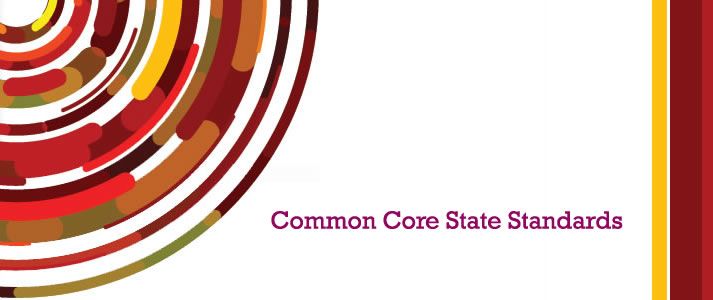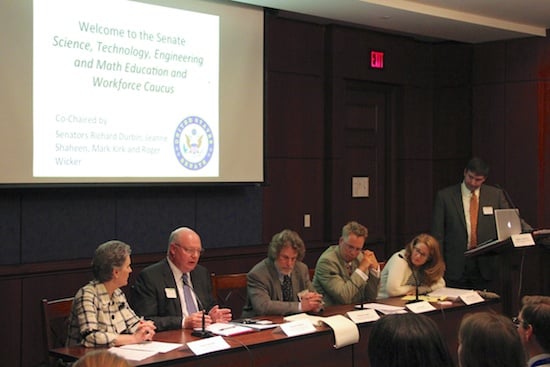RobotLAB Blog
Everything You Need To Know About Robotics in Businesses
WHAT DO EDUCATORS THINK ABOUT THE COMMON CORE STANDARDS INITIATIVE?

Backed by the National Governors Association (NGA) and the Council of Chief State School Officers (CCSSO), the Common Core Initiative Standards which are intended to provide clarity and consistency to student learning countrywide are scheduled to go into effect in the 45 states presently committed to them in 2015 (Five states, Alaska, Minnesota, Nebraska, Texas and Virginia are not participating at this time).
- 0 Comments
- Sep 9, 2013 2:00:00 PM
- Posted by Brendan Barnard
- Topics: Education, Education Politics
TODAY’S SCHOOLS LACK CREATIVE TEACHING AND LEARNING, STUDY SAYS
Is it possible to teach “thinking outside the box?” (Pun intended! Our RobotsLab Box is an invaluable tool for inspiring innovative and creative thinking!)
According to an Adobe Systems survey the answer is yes.
Why isn’t it happening then?
- 0 Comments
- Sep 6, 2013 2:00:00 PM
- Posted by Brendan Barnard
- Topics: EdTech, Education, Education Politics
OBAMA UNVEILS NEW PLAN TO BRING SCHOOLS AND STUDENTS INTO DIGITAL AGE
Just like kids shouldn’t be hitting chalk erasers together, teachers shouldn’t be writing on chalk boards either.  I mean, chalk is dirty, it gets everywhere and every time youhave to write on it you inevitably make that screeching noise with it. Don’t get me started with dry erase boards either, we’ll be here all day with that one.
I mean, chalk is dirty, it gets everywhere and every time youhave to write on it you inevitably make that screeching noise with it. Don’t get me started with dry erase boards either, we’ll be here all day with that one.
The Obama administration feels the same way about chalk/dry erase boards. At least I hope it does, which is why the President unveiled a new project called ConnectED which plans to get more electronic devices into the hands of teachers and students so that lessons can be taught digitally. Digitization of the classroom should lead to more engaged students, have less boredom, and better prepare them to compete in a highly industrialized economy. Tests are also digitized just like the lesson plans.
- 0 Comments
- Jul 1, 2013 5:30:00 PM
- Posted by Brendan Barnard
- Topics: STEM, Education, Education Politics
4 WAYS SCHOOLS CAN PREPARE FOR NEW TECHNOLOGIES IN THE CLASSROOM

Remember having to smash together chalk erasers when you got in trouble during class? It seems like an old punishment, but in fact some schools have been unable to adopt newer technologies, like white boards (or even more advanced: smart boards) in their classrooms. Despite how many times you personally had to clean the erasers, and how you may be fond of the taste of chalk dust, chalkboards (and thus their erasers) should be a thing of the past.
In a recent report, the Alliance for Excellent Education agrees, addressing four challenges that school leaders need to complete in order to give their students an advantage in the modern world and begin utilizing new digital learning and education technologies.
- 0 Comments
- Jun 28, 2013 11:00:00 AM
- Posted by Brendan Barnard
- Topics: Math, STEM, Education, Education Politics
6 TECHNOLOGY CHALLENGES EDUCATION IS FACING
If you’re reading this I’m pretty sure that I don’t have to tell you that we have a growing problem with our education system. There is a problem, but the first step to solving any problem is recognizing there is one; so we’re on the right track, right? The New Media Consortium also recognizes this and has put together "The NMC Horizon Report: 2013 K-12 Edition,” in hopes to identify problems with our approach to education technology. Below are the key issues they hope to have addressed.
- 2 Comments
- Jun 27, 2013 11:00:00 AM
- Posted by Brendan Barnard
- Topics: STEM, Education Politics
CONGRESS HELPS PROMOTE STEM EDUCATION AND WORKFORCE CAUCUS
Do you often have nightmares about your kids asking you to help them with their math homework? Do you see your child get out their graphing calculator and suddenly you’re scrambling for an excuse to leave the room? This is actually nothing new, so you’re not alone. Just like previous generations, parents of generation Zs are overwhelmed by the level of advanced skills their children can comfortably complete. But this is a good sign as the days of working on an assembly line have been replaced by working on network servers and the blueprints of tomorrow’s workforce demands a more educated population.
- 0 Comments
- Jun 24, 2013 1:03:00 PM
- Posted by Brendan Barnard
- Topics: STEM, National News, Education Politics
Relevant Posts
- Augmented Reality: A Tool for Teaching Students Robot Programming
- Fostering Innovation Through Youth Education in STEM and EdTech
- How Parents Can Foster STEM Learning Beyond the Classroom
- How Robotics Cultivates a Deep Understanding of Mathematics in Students
- RobotLAB Receives EDTech Chronicle 2023 ‘BESTIE’ Award for Landmark Partnership with American Samoa Dept. of Education.
Subscribe to Email Updates
-
I Want To Learn MoreADDITIONAL INFORMATION
